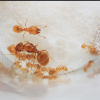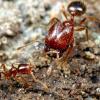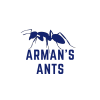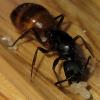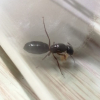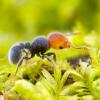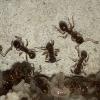Hello all! ![]()
As some of you may know, I tend to gravitate towards smaller ant species, and Strumigenys is no exception. This genus in particular has been on my bucket list to keep ever since I found a colony last year. This year, I hadn’t found any... until now! I happened to stumble across a sort of “Strumigenys hot-spot” in my yard. There’s a secluded area behind our lake’s dam that has loads of walnuts, twigs, and stems. It’s also in a shaded/mossy spot, so it’s a nice place to spend my day - which I did. I spent 6+ hours yesterday looking for colonies of these ants, and I ended up finding four in total (one of which I did not keep since they did not appear to have a queen). Transferring them into a test-tube setup was extremely time consuming. I used a large container lined with a thin coat of olive oil, and carefully dumped out each worker and piece of brood, a few at a time. I used wet q-tips to pick up each worker and egg/larvae/pupae to move them into the test tube, where they would spend the night. In total, I ended up with three colonies (I need help on the IDs):
Strumigenys cf. pilinasis (3 queens)
This was the first colony that I obtained that actually had a queen present. It was even more of a surprise when I found two additional queens deeper in the nest. I found this colony in a small twig, and they are, by far, the largest colony of the three (though, they don’t have the most queens of all three ![]() ). I’m assuming that this colony is S. pilinasis, but I would like confirmation. Have a look:
). I’m assuming that this colony is S. pilinasis, but I would like confirmation. Have a look:


Strumigenys cf. pilinasis (6 queens)
This was the third colony that I found, although I’m putting it as second on the list because I think they are also S. pilinasis? You may have noticed that this colony has six queens! It’s not a very large colony, but hopefully it will get much larger with that amount of egg-production. I also found this colony inside of a twig. Here they are:



Strumigenys sp. (1 queen)
And finally, here is the second colony I came across. I saved it for last because it doesn’t appear to be S. pilinasis, so an ID would be greatly appreciated - I’ll be doing some research, too, so I’ll post back if I find out the species. This colony only has one queen, but they definitely make up for it in their coloration! They are beautiful! I found this colony inside of a decaying walnut (which there are a few trees present in this “Strumigenys hot-spot”). Here they are:


I’ll be ordering a springtail culture soon, but in the meantime I have been collecting a bunch from outside - which I could probably start my own culture, too.
Edit: This is also its own separate journal because I feel like these ants deserve it. I might be breaking up my collective journal soon.
Double edit: I think the last colony is S. pulchella?
Edited by CatsnAnts, July 24 2020 - 7:14 AM.


